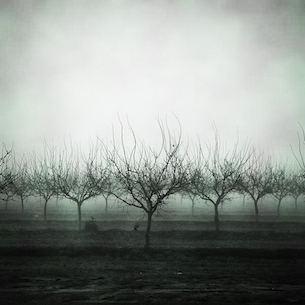California's winter tule fog - hated by drivers, but needed by fruit and nut trees - has declined dramatically over the past three decades, raising a red flag for the state's multibillion dollar agricultural industry, according to researchers at the University of California, Berkeley.

Foggy orchard in California's Central Valley. Photo: iStockphoto
Crops such as almonds, pistachios, cherries, apricots and peaches go through a necessary winter dormant period brought on and maintained by colder temperatures. Tule fog, a thick ground fog that descends upon the state's Central Valley between late fall and early spring, helps contribute to this winter chill.
"The trees need this dormant time to rest so that they can later develop buds, flowers and fruit during the growing season," said biometeorologist and study lead author Dennis Baldocchi, whose father grew almonds and walnuts in Antioch and Oakley. "An insufficient rest period impairs the ability of farmers to achieve high quality fruit yields."
The study was published Thursday, May 15, in the journal Geophysical Research Letters, a publication of the American Geophysical Union. The findings have implications for the entire country since many of these California crops account for 95 percent of U.S. production, the authors noted.
